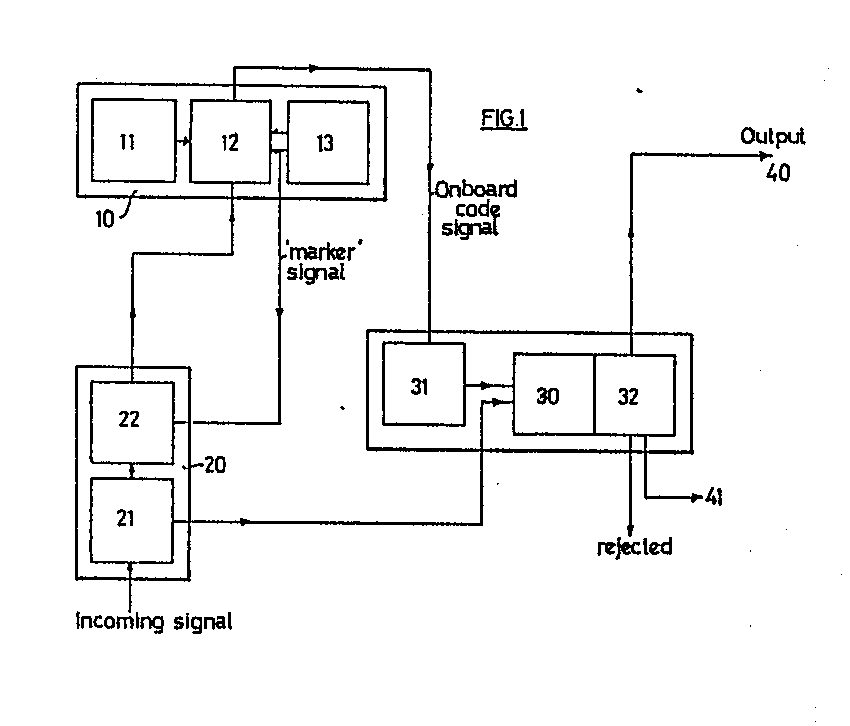(57) An electronic control unit has means for receiving an external inhibit code signal
(20), an internal code generator (10), means for comparing (30) the external inhibit
code signal with a signal or signals produced from the internal code generator, and
means for inhibiting (40) the operation of an alarm device which device will be activated
if a correct external inhibit code signal is not received periodically by the control
unit. A binary digital code word of 27 bits is described, of which the first 13 bits
consist of a unique code, and the last 14 bits are synchronisation bits. This enables
the external code signal to be synchronised with the internal code signal. The electronic
control unit has been developed for use as a security switch, enabling the external
code generator to be provided either in the form of a key or key-card which is placed
in physical contact with a lock controlled by the electronic control unit, or in the
form of a transmitter which transmits the appropriate code signal to a receiver which
controls an alarm device, such that if the receiver does not receive the correct inhibit
code signal at specified intervals, the alarm circuit will no longer be prevented
from operating, and an alarm will be activated, or the alarm circuit can be used to
disable the device, for example to disable the ignition of a motor vehicle.
|

|
